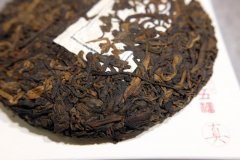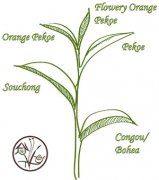What are the effects and contraindications of ten famous teas? Helicobacter pylori is most afraid of two kinds of tea.
Accelerate the metabolic rate
Drinking tea can treat edema, cystitis, urethritis and other urinary system diseases. For urinary system stones, tea also has a certain stone-solving effect. People who do not drink tea are 3.1% more likely to suffer from coronary heart disease, 2.3% of those who drink tea occasionally and 1.4% of those who drink tea regularly. This is because the caffeine and theophylline in tea can directly stimulate the heart, dilate the coronary arteries, allow blood to fully enter the heart, and improve the function of the heart itself.

Sterilization, anti-inflammation
Tea has an inhibitory effect on E. coli, staphylococci and viruses. Tea polyphenols such as catechins and theaflavins decrease viral activity once they bind to viral proteins.
Aid digestion
Drinking tea helps digestion. Because tea contains some aromatic compounds, they can dissolve fat and help digest meat.
Lower blood pressure and anti-aging
Tea polyphenols, vitamin C and nicotinic acid can reduce lipid, blood pressure and improve vascular function.
Refreshing
Tea is refreshing because it contains caffeine that affects the central nervous system.

Anti-cancer
Tea polyphenols and other components have significant anticancer effects, because tea extracts can block the synthesis of nitrosamines. A large number of studies have shown that tea is an effective food to prevent cancer. The American Cancer Society recommends drinking six cups of green tea a day to prevent cancer.
Antispasmodic asthma
Tea has the effect of expelling sweat, relieving fatigue, expectorant and relieving asthma, and has the effect of treating colds, coughing and other diseases. Theophylline in tea can directly stimulate the respiratory center and has a first-aid effect on respiratory failure.
Strengthen the teeth to strengthen the bones
The fluorine in tea can strengthen bones and prevent dental caries. Common oral diseases such as oral inflammation and gingival bleeding are often caused by vitamin C deficiency. Tea is rich in vitamin c, which can partially supplement the lack of vitamin c in the diet.
Fitness and weight loss
Drinking tea properly helps to moisturize the skin and maintain a slim figure.
Important Notice :
前街咖啡 FrontStreet Coffee has moved to new addredd:
FrontStreet Coffee Address: 315,Donghua East Road,GuangZhou
Tel:020 38364473
- Prev

What is Pu'er tea? is it black tea, Pu'er old tea or new tea? how much is it worth after 10 years?
Many of us are curious about what kind of tea is best. There are a large number of answers on the Internet to tell the difference of each kind of tea. People are also asking themselves if they drink the best tea. Some people are looking for the best tea and take shortcuts, but the end is not happy. We will show you how to choose the best tea for yourself. Most of us start drinking tea from green or black tea. This is our first time.
- Next

How to distinguish the classification standard of international black tea? what is the best grade of black tea?
Western black tea grading in the European tradition of managing black tea production, whether mechanical or manual, products are graded according to the following grades, in order to achieve certain quality standards. This is called orthodox black tea, in contrast to the faster and more industrialized black tea production that was later invented. Basic orthodox achievements in the production of OP-Orange Pekoe- yellow-orange Baihao tea
Related
- Beginners will see the "Coffee pull flower" guide!
- What is the difference between ice blog purified milk and ordinary milk coffee?
- Why is the Philippines the largest producer of crops in Liberia?
- For coffee extraction, should the fine powder be retained?
- How does extracted espresso fill pressed powder? How much strength does it take to press the powder?
- How to make jasmine cold extract coffee? Is the jasmine + latte good?
- Will this little toy really make the coffee taste better? How does Lily Drip affect coffee extraction?
- Will the action of slapping the filter cup also affect coffee extraction?
- What's the difference between powder-to-water ratio and powder-to-liquid ratio?
- What is the Ethiopian local species? What does it have to do with Heirloom native species?

